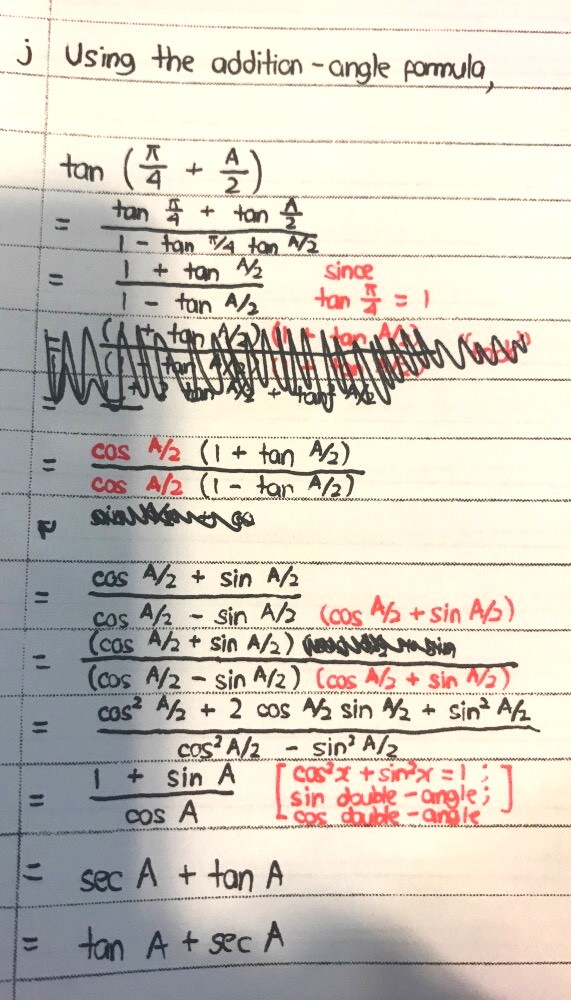Eric Nicholas K's answer to Annela's Secondary 4 A Maths Singapore question.
done
{{ upvoteCount }} Upvotes
clear
{{ downvoteCount * -1 }} Downvotes
Good afternoon Annela! Here are my workings for part j. I will look at part k at a later time.
Date Posted:
4 years ago
Hello can i ask why did you multiply by cos(A-pi/2) to both numerator and denominator
The number which I multiplied to both sides is cos A/2, which is introduced because tan A/2 = sin A/2 / cos A/2 is a fraction in itself. Multiplying both numerator and denominator by cos A/2 ensures I will not have to deal with a “fraction in the numerator and fraction in the denominator” scenario.
Multiplying cos A/2 by tan A/2 is akin to multiplying cos A/2 by sin A/2 / cos A/2 which simplifies to sin A/2.
On top of this, leaving my trigonometric expressions in sines and cosines simplifies matters a lot when it comes to the double angle formula.
Multiplying cos A/2 by tan A/2 is akin to multiplying cos A/2 by sin A/2 / cos A/2 which simplifies to sin A/2.
On top of this, leaving my trigonometric expressions in sines and cosines simplifies matters a lot when it comes to the double angle formula.



